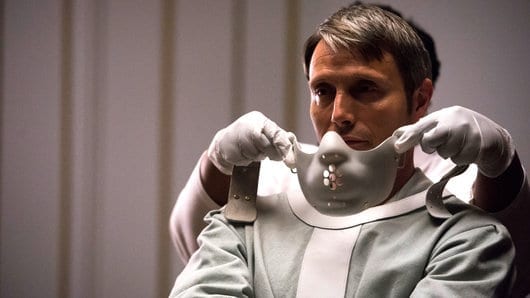If you’re an avid TV watcher, you’ve been through the most painful experience for any fan: the premature cancellation of something you love. With NBC’s Hannibal being the most recent example of this type of tragedy and coming to an end this last week, I think it’s important to take a look back at some of the things that made this show so brilliant.
A Unique Vision
The most surprising aspect of Hannibal’s artistic success is how quickly and effectively it set itself apart from the Hannibal Lecter film universe. Considering how well received The Silence of the Lambs still is, it takes a special kind of confidence to look at a highly successful franchise and decide to take your own stab at it, but Hannibal did this masterfully.
Both of these characters have been played by more than one actor in film prior to being brought to television. Will Graham appeared in both the unfortunately overlooked film Manhunter, (played by William Petersen), as well as The Silence of the Lambs prequel, Red Dragon, (Edward Norton). While both of these actors were incredibly solid in these roles, there is a much larger shadow that hangs over this franchise: Hannibal Lecter.

When I first heard about Hannibal, I was incredibly skeptical, and the main reason for that fell on one question: how would they possibly live up to Anthony Hopkins’ performance as Lecter? Hopkins’ portrayal of Hannibal is truly iconic. He won an Academy Award for The Silence of the Lambs, and was incredibly solid as Lecter in two other films as well. Hannibal was also played quite well by two other actors, Brian Cox in Manhunter, and Gaspard Ulliel, who was the only memorable or worthy part of the atrocious origin story, Hannibal Rising.So how did Hannibal find a way to reimagine these characters in a way that rises above the noise of these performances? Incredibly fresh takes on these characters and mind blowing performances by Hugh Dancy and Mads Mikkelsen.
In both of these movies, we see Graham attempt to put himself in the mind of a killer, but the show takes us a step further by placing Graham into a recreation of the murders he investigates. You see Graham commit unthinkable acts of violence while describing the motivation behind the killing in the first-person. These scenes immediately set Hannibal apart from both other shows (especially on network TV), as well as the film franchise. Mikkelsen’s performance is truly extraordinary and unique. Hopkins portrayed Hannibal as quiet and foreboding, but Mikkelsen takes this to an entirely new level. Where Hopkins had moments where you saw Lecter’s psychotic nature through sudden outbursts, meant to terrify those he was in opposition to, Mikkelsen’s Lecter remains constantly calm, never hinting at the horrifying things he has planned.
Disturbing, Visceral, Beautiful
There are many things that I will miss about Hannibal now that it has been cancelled. Out of these, however, the stunning visual beauty of the show is what I will miss the most. I have always been a sucker for cinematography and set design, and both of these are absolutely top-notch in Hannibal. Whether it be the dark woods surrounding Will’s home in Wolf Trap, Virginia (which they make look incredibly foreboding, despite how pleasant the area actually seems), Hannibal’s ornate and classic study, or the sparse halls of the FBI, every location in the show looks absolutely stunning.
Lighting and cinematography are huge parts of why this worked so amazingly well, but the biggest reason why Hannibal’s locations are so striking comes from immaculate set design. Each location exactly represents the character that inhabits it, down to incredibly minute details. The most important example within the show, however, is in the personal spaces of the three main characters—Will Graham, Hannibal Lecter, and Jack Crawford. These characters are perfectly characterized by the places they work. Hannibal’s office is extravagant and beautifully put together, just as his public image is. When you look closer, however, there are repeated motifs of violence throughout the art and architecture of the space, representing Hannibal’s monstrous true nature.

Jack Crawford’s office is sparse and perfectly in order. The only adornments still have practical uses, reminiscent of the way Jack runs his unit. He expects results, and will use things at his disposal to achieve them, at times with a complete lack of regard for the consequences it may have. We mostly see Will Graham work out in the field, but the juxtaposition of this work environment with that of his academic one is where the show’s true genius is found. His work out in the field is filled with violence.
The psychology behind office design has been studied for a long time in real world applications, but that in-depth attention to detail has been largely absent from television. With how deliberately Hannibal is about set and visual design, it is obvious that there was a great deal of thought that went into these work spaces. For most shows, this would largely be an afterthought, but Hannibal is a different animal. Small, but powerful details like this are why I am going to miss this show terribly. Unless, of course, the movie happens.
Words by Zachary Evans.
